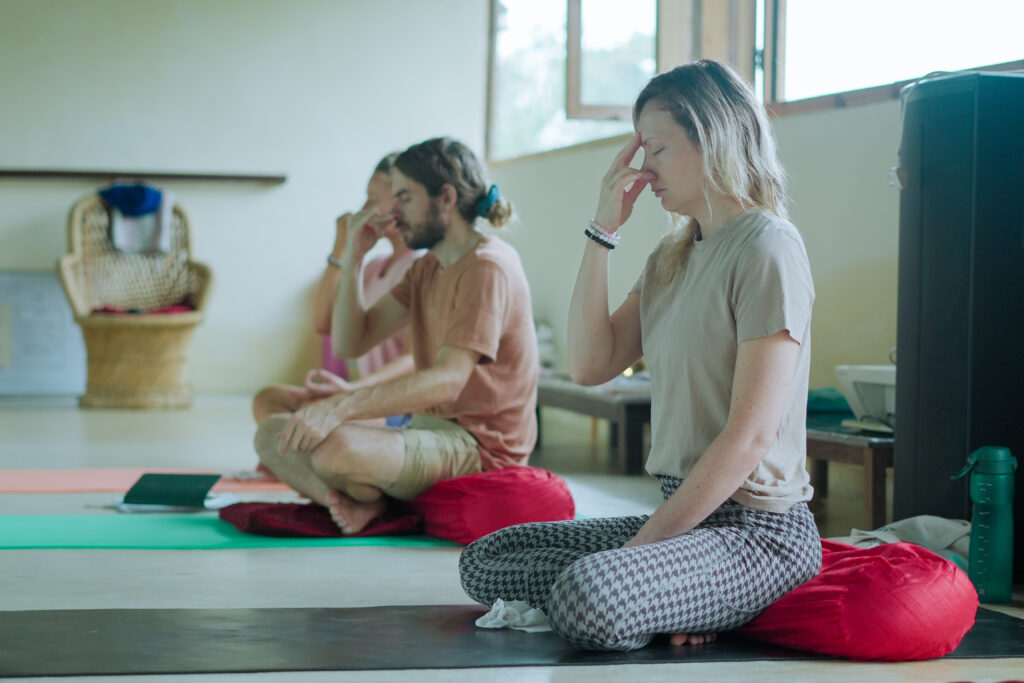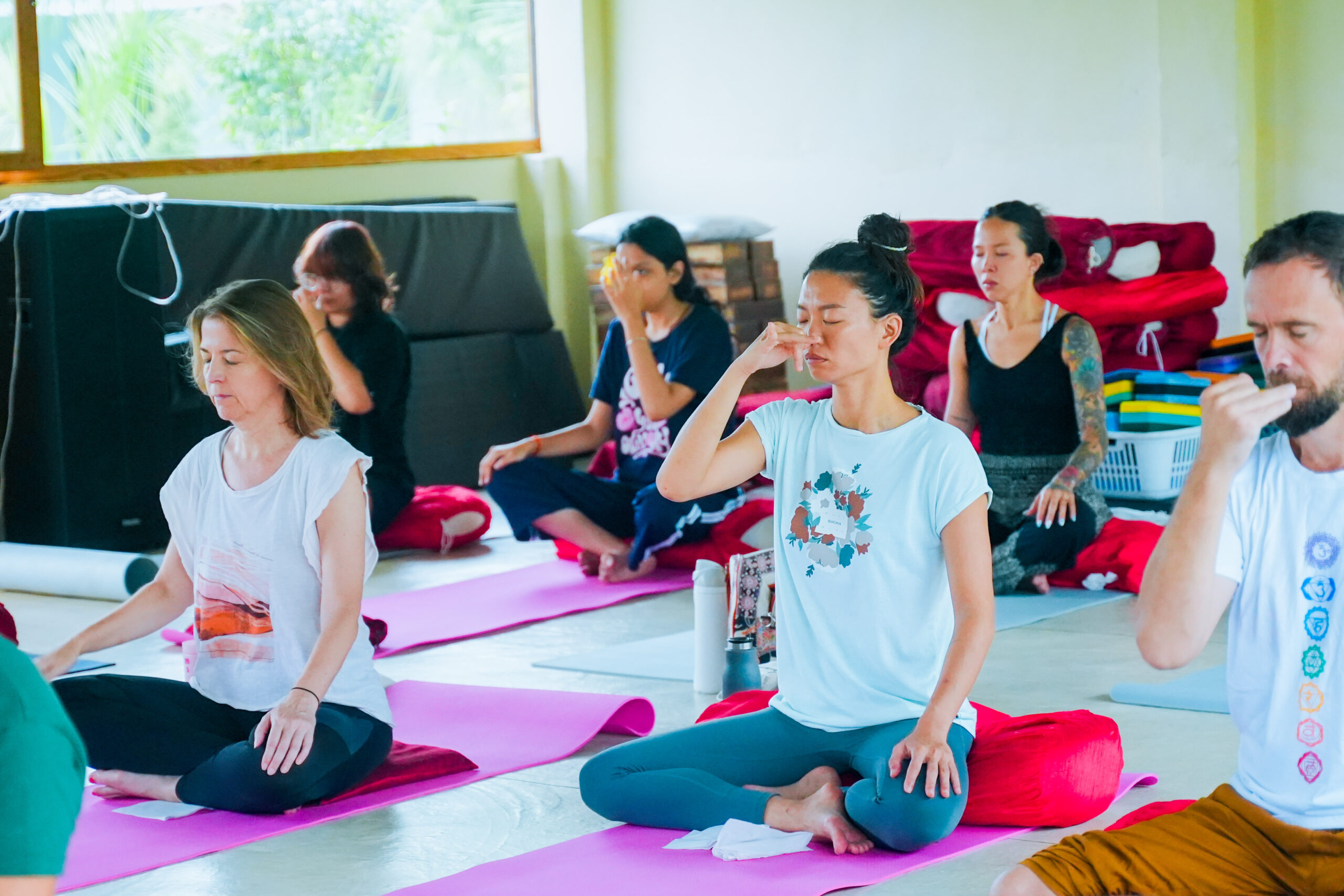Join us on a discovery of breath and energy; a journey of intention changing your practice! In case you have ever had this indefinable feeling when you are doing yoga or when you wanted to know your body better, then you are in the treat. In this blog entry we explore the amazing realm of Bandhas, or those energy locks of power, and how these locks interact in harmony with the ancient practice of Pranayama or breath control. Combined, they provide a special channel to open the possibilities of your body and spiritual practice. Being an experienced yogi or a beginner who only ventures into these ideas, be prepared to immerse your self into methods that can not only improve your physical health, but also bring clarity and peace to your mind. This is a transformational adventure that we should go on.
Introduction to Bandhas and Pranayama
The process of unlocking the hidden energy in our bodies is a process many people strive to learn, yet few have the knowledge. Imagine to utilize a strong force that is only there to be used- and that is where Bandhas and Pranayama are applied. These ancient practices are not only tricks, they are keys to your physical and spiritual health.
The deeper you go into the fascinating traditions of yoga, the more you will learn how these concepts can change your practice and daily life. Are you in need of an added dose of vitality in your asanas or do you want to be more mentally clear, the benefits of learning to master Bandhas and Pranayama go deep beyond the mat. We should therefore go on this illuminating journey of exploring energy locks in the body and discover their potential with each other!
What are Energy Locks in the Body?
Energy locks are yoga bandhas which are important to control the flow of prana or the life force in the body. These locks serve to conserve energy, and make it move towards particular areas during meditation and practice.
Three major bandhas are Mula bandha in the root, Uddiyana bandha in the abdomen and Jalandhara bandha in the throat. The locks engage different energy channels which make a person feel vital.
When these energy locks are involved, practitioners will be able to empower inner strength and improve concentration. This conscious restraint makes it possible to do a deeper work of breath during pranayama.
Learning these delicate mechanics is important to those individuals who seek to enhance their yoga practice. When you unlock these energies not only does your practice change but also your everyday life experience. Being conscious of these locks, you relate to a potent source of self knowledge and renewal.
Must Visit: 7 days Yoga Retreat in Rishikesh
The Three Main Bandhas: Mula, Uddiyana, and Jalandhara
Mula, Uddiyana and Jalandhara are the three major bandhas that are used as effective instruments in yoga. All of them play a specific role in regulating energy.
The root lock, also called Mula Bandha is at the pelvic floor. The involvement in this sector attracts energy within and upwards generating a stable platform on spiritual development.
Uddiyana Bandha means the lock of the abdomen. In this bandha, one pulls the abdomen toward the spine as he/she expels all the air. It activates digestion and increases energy.
Jalandhara Bandha is the throat lock which deals with the energy flow and is based on correct neck posture. It helps to pinch the chin in front of the chest and through this, it aids in balancing your mind and body when performing pranayama.
The combination of them forms an internal dynamic which encourages concentration and power both in physical practice and meditation.

Benefits of Practicing Bandhas and Pranayama
Bandhas and pranayama also have an abundance of benefits to the body and mind. Through these methods, energy is utilized and this inspires physical fitness and mental clarity.
Bandhas assist in activating central muscles that would result in stability in the process of yoga. This activity aids in better posture thereby lessening pressure on the spine.
The breath control (pranayama) relaxes the nervous system. It promotes relaxation and increase in the lung capacity. The deeper you breathe the more stress evaporates.
The combination of them forms a dynamic flow which equalizes emotions. It is in this harmony that one develops emotional strength in everyday life.
Also, the practices can enhance concentration and attention. This energy coupled with the controlled breathing makes your mind stay in the present.
The frequent integration of bandhas, as well as pranayama, into your day takes your well-being to a higher level. This synergy takes effect in you in a way that you may feel closer to your inner self.
Step-by-step Guide to Performing Bandhas and Pranayama
Beginning with Mula Bandha, sit in a comfortable position in a cross-legged position. Then take a deep breath in using your nose and then softly use the pelvic floor muscles as though you are trying to withhold the urine flow. Breathing normally whilst in contraction.
Then, in the case of Uddiyana Bandha, you can breathe out and pull your belly button to the spine. This motion produces some sort of a lift to the abdomen. Tuck your chin a little when you are holding this lock.
And now we will see Jalandhara Bandha. Then as you breathe in, bring your chin down to your chest by filling your lungs. Pressure should also be put on the throat gently to avoid straining.
After you have worked at each bandha separately, put them together in the pranayama exercises such as Nadi Shodhana or Kapalabhati. Pay attention to breathing and movement in harmony so that to make the body as active as possible.
Combining Bandhas and Pranayama with Yoga Asanas
Both bandhas and pranayama can be efficiently incorporated into your yoga training to add a substantial value to your asanas. When you practice any of these techniques, each pose becomes a more profound encounter with energy and breath.
When you are going through some poses such as Downward Dog or Warrior II, use Mula Bandha to stabilize yourself and improve your support. This lock will promote a feeling of security and your energy will be oriented upwards.
Breath deeply in an asana, then resort to Uddiyana Bandha to provide space in your stomach. This is beneficial to the core strength and will improve circulation within the body.
Jalandhara Bandha is also essential; it assists in controlling the throat chakra, so that prana moves freely at the time of breathing exercises that are a part of your practice.
The combination of these aspects makes each movement a dynamic energy dance, and with more focus and mental clarity on the mat.
Common Mistakes to Avoid while Practicing Bandhas and Pranayama
Awareness is important when practicing Bandhas and Pranayama. A general error is to take the breath too long. This may give rise to strain instead of rest. Instead, concentrate on a natural rhythm.
The other trap is failure to engage the Bandhas in the proper way. Most practitioners either overuse it or they forget it altogether. Effectiveness requires proper alignment and subtlety.
Practices that are hurried may reduce their value. Breath deeply and be in touch with your body.
Disregard of body signals is also dangerous. Pain or discomfort is not to be overlooked; they are the messages that something needs to be corrected.
Lastly, the absence of warm-ups can lead to strains in the course of the practice. Warm up your body with mild stretches then move on to more serious poses such as Bandhas and Pranayama.
Maintaining a Regular Practice and Incorporating into Daily Life
The habit of bandhas and pranayama may change your energy levels. Begin with brief sessions throughout the day, and as long as you feel comfortable you can increment the time.
Think of using these practices every morning. Practicing a couple of minutes of breathwork may establish a positive mood to the upcoming day. It may also be helpful to take little refresher breaks in between your work or study sessions.
Developing a special place in your home to practice will help increase focus and intent. Even easy things, such as sticky notes, can make you use these methods during your day.
Test various times and settings until you find which is most natural to yourself. At sunrise or before going to bed, consistency is important in order to get the best out of them in their daily lives.
Conclusion: The Power of Unlocking Energy Locks through Bandhas and Pranayama.
By breaking the energy locks of our bodies with the help of Bandhas and Pranayama we receive an entire world of possibilities. Such ancient practices do not only benefit the physical health, but contribute to the mental clarity and emotional equilibrium. Practitioners have the opportunity to develop a strong affinity towards their interior selves by mastering the three main Bandhas Mula, Uddiyana and Jalandhara.
By integrating these practices into your daily life, yoga will become a whole new experience that influences your wellness experience. You will find there is a lot of energy going through you as you explore these energy locks. This holistic approach results in deep transformations on the mat and off the mat.
With the decision to practice on a regular basis, you will be opening new dimensions of awareness and creativity in your life. The Pranayama and Bandhas synergy is an effective instrument of self discovery. Interact with them in a conscious manner so that they may result in a full-bodied experience.
It is a long process that is rewarded by patience, regularity and openness to unlock the energy locks. Continuing with this exploration, keep in mind every breath is a new opportunity to grow, and it is something to be reminded that we all have the true power.
Learn more about the Pranayama Yoga Retreat. You can join a yoga teacher training in rishikesh





